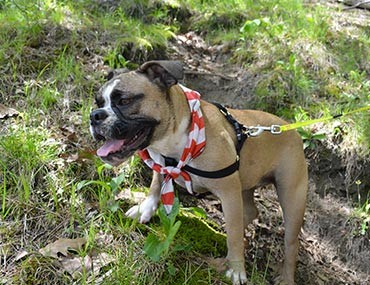Overview
If you have ever seen the Alien movies, you can relate to a Cuterebra infestation. Cuterebra are large flies who use dogs, cats, squirrels, rodents, and rabbits as hosts in which to grow more Cuterebras. A type of myiasis (maggot infestation), Cuterebra infestations can be rather disturbing to witness on your pet.
The life cycle of this fly is as follows:
 The large fly lays eggs near the nest of rabbits or rodents.
The large fly lays eggs near the nest of rabbits or rodents.- The body heat of the nesting animal causes the maggot to hatch into tiny worms.
- [This is where the science-fiction story begins….] The tiny maggots travel through the nose, mouth, or a skin wound and migrate under the skin of a poor nesting creature.
- In some cases, dogs and cats pick up a wandering maggot when investigating the nest of a rabbit or rodent.
- Once under the skin, a cyst forms around the maggot and the little parasite grows to as much as 1 inch in length, living happily under the host’s skin.
- Worse yet, a small breathing hole appears in the host’s skin, and you can actually see the Cuterebra poking his alien head out of the cyst!
- Eventually, if no human intervention takes place, the Cuterebra grows up and leaves the cyst to start the vicious parasitic cycle all over again!
In dogs, the Cuterebra maggot is most often found near the head or neck.
Diagnosis/Treatment
Your dog will be luckier than the characters in Alien because, with appropriate treatment, he won’t die as a result of this infestation. If your dog is hosting one of these nasty bugs, you or your veterinarian can diagnose the issue by visual inspection. For removal, however, it is highly recommended you visit your veterinarian because the maggot must be removed whole, not severed in the extraction process—doing so could cause an allergic reaction in your pooch.
Once the maggot is removed, your veterinarian will most likely flush out the opening and may prescribe antibiotics to reduce the risk of an infection.
Prevention
The best way to prevent an “alien” from invading your four-legged friend’s skin is to limit his exposure to rabbit and rodent nests. Frequently check your dog’s skin for bumps and other abnormalities, and be sure to contact your veterinarian if you suspect anything out of the ordinary.
If you have any questions or concerns, you should always visit or call your veterinarian – they are your best resource to ensure the health and well-being of your pets.
